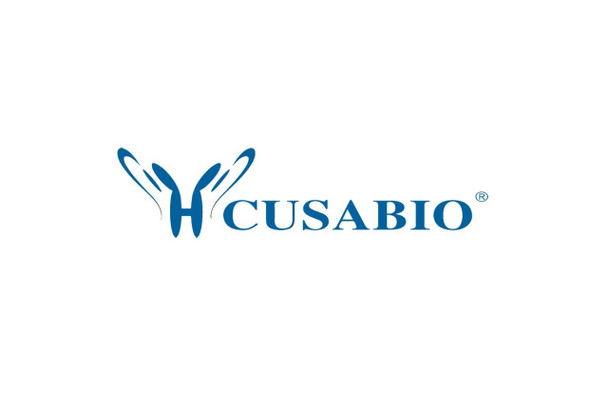Cusabio Human Recombinants
Recombinant Human ATP synthase-coupling factor 6, mitochondrial (ATP5J) | CSB-EP002369HU
- SKU:
- CSB-EP002369HU
- Availability:
- 13 - 23 Working Days
Description
Recombinant Human ATP synthase-coupling factor 6, mitochondrial (ATP5J) | CSB-EP002369HU | Cusabio
Alternative Name(s): ATP synthase; H+ transporting; mitochondrial F0 complex; subunit F6; ATP synthase-coupling factor 6; mitochondrial; ATP synthase-coupling factor 6; mitochondrial; ATP5; ATP5A; ATP5J; ATP5J_HUMAN; ATPase subunit F6; ATPM; CF6; F6
Gene Names: ATP5J
Research Areas: Tags & Cell Markers
Organism: Homo sapiens (Human)
AA Sequence: NKELDPIQKLFVDKIREYKSKRQTSGGPVDASSEYQQELERELFKLKQMFGNADMNTFPTFKFEDPKFEVIEKPQA
Source: E.coli
Tag Info: N-terminal GST-tagged
Expression Region: 1-108aa
Sequence Info: Full Length
MW: 36 kDa
Purity: Greater than 90% as determined by SDS-PAGE.
Relevance: Mitochondrial membrane ATP synthase (F1F0 ATP synthase or Complex V) produces ATP from ADP in the presence of a proton gradient across the membrane which is generated by electron transport complexes of the respiratory chain. F-type ATPases consist of two structural domains, F1 - containing the extramembraneous catalytic core and F0 - containing the membrane proton channel, linked together by a central stalk and a peripheral stalk. During catalysis, ATP synthesis in the catalytic domain of F1 is coupled via a rotary mechanism of the central stalk subunits to proton translocation. Part of the complex F0 domain and the peripheric stalk, which acts as a stator to hold the catalytic alpha3beta3 subcomplex and subunit a/ATP6 static relative to the rotary elements. Also involved in the restoration of oligomycin-sensitive ATPase activity to depleted F1-F0 complexes.
Reference: "Human mitochondrial ATP synthase: cloning cDNA for the nuclear-encoded precursor of coupling factor 6." Javed A.A., Ogata K., Sanadi D.R. Gene 97:307-310(1991)
Storage: The shelf life is related to many factors, storage state, buffer ingredients, storage temperature and the stability of the protein itself. Generally, the shelf life of liquid form is 6 months at -20?/-80?. The shelf life of lyophilized form is 12 months at -20?/-80?.
Notes: Repeated freezing and thawing is not recommended. Store working aliquots at 4? for up to one week.
Function: Mitochondrial membrane ATP synthase (F(1)F(0) ATP synthase or Complex V) produces ATP from ADP in the presence of a proton gradient across the membrane which is generated by electron transport complexes of the respiratory chain. F-type ATPases consist of two structural domains, F(1) - containing the extramembraneous catalytic core and F(0) - containing the membrane proton channel, linked together by a central stalk and a peripheral stalk. During catalysis, ATP synthesis in the catalytic domain of F(1) is coupled via a rotary mechanism of the central stalk subunits to proton translocation. Part of the complex F(0) domain and the peripheric stalk, which acts as a stator to hold the catalytic alpha(3)beta(3) subcomplex and subunit a/ATP6 static relative to the rotary elements. Also involved in the restoration of oligomycin-sensitive ATPase activity to depleted F1-F0 complexes.
Involvement in disease:
Subcellular Location: Mitochondrion, Mitochondrion inner membrane
Protein Families: Eukaryotic ATPase subunit F6 family
Tissue Specificity:
Paythway: OxidativePhosphorylation
Form: Liquid or Lyophilized powder
Buffer: If the delivery form is liquid, the default storage buffer is Tris/PBS-based buffer, 5%-50% glycerol. If the delivery form is lyophilized powder, the buffer before lyophilization is Tris/PBS-based buffer, 6% Trehalose, pH 8.0.
Reconstitution: We recommend that this vial be briefly centrifuged prior to opening to bring the contents to the bottom. Please reconstitute protein in deionized sterile water to a concentration of 0.1-1.0 mg/mL.We recommend to add 5-50% of glycerol (final concentration) and aliquot for long-term storage at -20?/-80?. Our default final concentration of glycerol is 50%. Customers could use it as reference.
Uniprot ID: P18859
HGNC Database Link: HGNC
UniGene Database Link: UniGene
KEGG Database Link: KEGG
STRING Database Link: STRING
OMIM Database Link: OMIM









